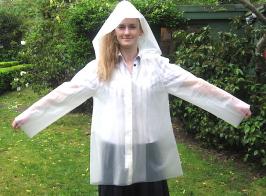Technology Scholarship conversation
Identifying students

Key factors in identifying likely candidates include:
- a well-developed technological literacy built over time
- a willingness to commit and well-developed project management skills
- students already doing other scholarship subjects can be an indicator (and some scholarship concepts, such as metacognition, are common across subjects).
Candidates can be identified in their early secondary years and nurtured.
Claire and Abby
A school-wide technology curriculum programme is being implemented. Already from year 7, a cohesive programme is offered across all of the strands of the technology curriculum, and there is work in progress to achieve this from year 1. Students coming into the senior school with this prior learning and hence a sound technological literacy is critical for scholarship success.
Working together as a faculty enhances teacher knowledge. Teachers find it easier to understand all of the components, choose appropriate and engaging contexts, teach effectively, and assess what students already know or have learned.
Students who seem likely technology scholarship candidates are noted at year 11 and at year 12 they are shown portfolios and submissions from successful students.
This year, students are being asked to commit to scholarship. In term one, a form was issued electronically to all year 13 students. Both the students and teachers are required to sign this off.
The school is signalling to the students that this is a serious commitment for both parties. It is also an attempt to address the problem of teachers putting in considerable time on scholarship students and then students choosing not to submit.
Students are also being encouraged to take three scholarship subjects as the broad generic understandings across scholarship standards can assist students to have success in more than one scholarship subject.
Level 3 is generally a very busy time for students as they position themselves for the next stage of their education. Abby and Claire agree that building effective relationships with these students is important. Being mindful of students’ commitments, and getting to know how they work and what else they are working on is key to student success.
Carol
Potential scholarship students are identified sometimes as early as year 10 at Havelock North High School. Conversations around contexts and potential issues for curriculum level 8 start in year 12.
Bill
I agree with Carol’s comments about identifying students as early as year 10. When I get a high-achieving student, I see that as a challenge for myself and the programme of learning I have developed – and begin early guiding and developing the skills they will need for success.
John
I agree with Carol and Bill that there are students who are intuitive about the requirements of scholarship and can be identified early on and nurtured. A year 11 student who gained technology scholarship could consider DVC scholarship, or moving the outcome to the pre-production stage (manufacturing), as well as aiming for outstanding or top scholar.
